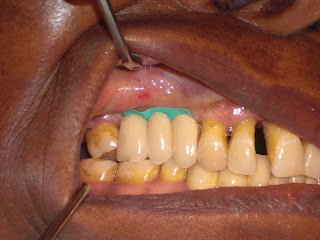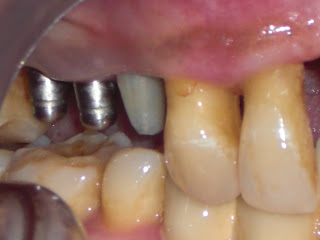Maintenance of Hygiene for a Minidentalimplant Bridge

Maintenance of hygiene for a bridge is important. This minidentalimplant bridge can be flossed anteriorly and posteriorly and also in between the implant abutments. The bridge is designed so that the interproximal clefts are generally between the mini dental implants. Thus it is important not only to place the minis parallel but also precisely in the middle of where a normal tooth is expected to be. This will lend itself to ease of bridge design for the technician as well as ease of flossing in between the implants with the help of a bridge cleaner. The narrow diameter of the minis results in a corresponding narrow transmucosal passage of the dental implant as it traverses the gum and emerges into the mouth. Logically then, it will have a lower chance of infection and peri-implantitis as compared to conventional larger diameter implants especially accompanied by an aesthetic emergence profile that demands a broader transmucosal passage especially at the point where it emerges into t


